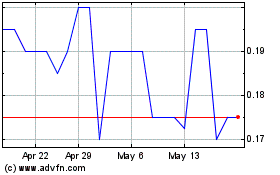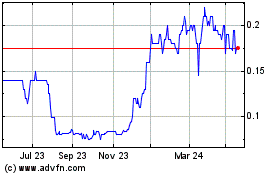2nd UPDATE: Newcastle Coal Export Plan Could Double Exports
September 18 2009 - 3:31AM
Dow Jones News
Coal miners in the Hunter Valley region of New South Wales state
have agreed to a coal export plan that the state's government said
could see Australia's biggest coal export port of Newcastle double
its capacity in the next six years.
The port has long been a notorious bottleneck, crimping
Australian export earnings and costing miners millions of dollars
in demurrage charges as dozens of bulk carriers queued offshore
waiting to be loaded.
The Newcastle Coal Infrastructure Group, made up of six miners
led by BHP Billiton Ltd. (BHP.AU), has now agreed to the new plan
for distributing port capacity, a plan already supported by the
government and Port Waratah Coal Services, whose shareholders
include Rio Tinto Ltd. (RTP) and Xstrata PLC (XTA.LN).
New South Wales Premier Nathan Rees said Friday the plan will
support thousands of new jobs and boost Australia's annual coal
export revenue by about A$6.5 billion by 2016.
"This plan cements Newcastle's position as the world's biggest
coal port with export capacity expected to double to 180 million
tons over the next six years," he said.
The export plan will see NCIG grant new coal producers access to
some of the capacity of future expansions of its export facilities
at Newcastle.
Federal Infrastructure Minister Anthony Albanese said in a
statement that the plan complemented the A$1.2 billion investment
the government and the Australian Rail Track Corporation is making
to more than double the capacity of the Hunter Valley's rail
network.
The accord allows coal loading and rail operations to be
underpinned by 10-year contracts, giving producers as well as rail
and port operators the certainty they need to make long-term
investment decisions and grow their businesses, he said.
It will also guaranteed access to new producers wanting to enter
the market, Albanese said.
The port group, made up of BHP Billiton, Centennial Coal Co.
Ltd. (CEY.AU), Peabody Energy Corp. (BTU), Donaldson Coal, Felix
Resources Ltd. (FLX.AU) and Whitehaven Coal Ltd. (WHC.AU), is close
to completing the first stage of its coal terminal development,
which will have a capacity of 30 million tons a year.
Under the agreement, they will make available up to 12 million
tons a year of any further expansion to new coal producers.
"With these agreements in place, the coal industry will have
long-term certainty over future access to vital port capacity,
which will support our future expansions and growth of the region,"
BHP Billiton President of Energy Coal Jimmy Wilson said in a
statement.
A spokesman for NCIG confirmed that all the capacity framework
documents for the access regime have now been signed by all parties
and said the agreements are now subject to approval by the
Australian Competition and Consumer Commission.
PWCS General Manager Graham Davidson said the agreement set the
scene for historic change in the way coal is exported from the
Hunter Valley.
"We now effectively have all key players reading off the one
road map, meaning everyone has a far better idea of what
infrastructure should be built, and where and when," he said.
The plan gave certainty to coal producers in terms of their
export capacity and would deliver capacity for those seeking to
expand mines or launch new operations, he said.
PWCS operates the two existing coal terminals at Newcastle and
is close to completing a A$458 million upgrade that takes its
capacity to 113 million tons a year, although the limitations of
the rail system mean exports are capped at 91 million tons a year
for now.
As part of the new export plan, the government has agreed to
lease more land to PWCS on Kooragang Island for the construction of
another coal loading terminal, and PWCS said feasibility work on
this development is already underway.
Currently, with export capacity falling short of demand from
Hunter Valley miners, a capacity balancing system has been in place
to allocate tons to producers.
PWCS said it is now applying to the ACCC to allow it to continue
this system for the remainder of 2009, until the new export plan
comes into place at the start of 2010.
-By Alex Wilson, Dow Jones Newswires; 61-3-9292-2094; alex.wilson@dowjones.com
(Andrew Harrison in Melbourne also contribute to this story.)
Felix (ASX:FLX)
Historical Stock Chart
From Mar 2024 to Apr 2024

Felix (ASX:FLX)
Historical Stock Chart
From Apr 2023 to Apr 2024
